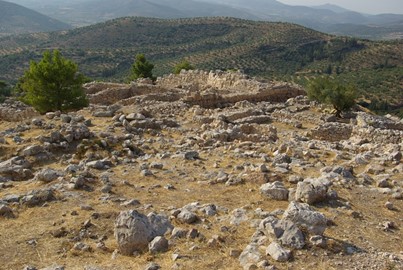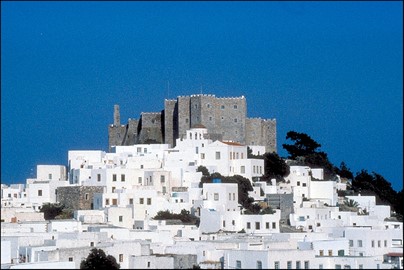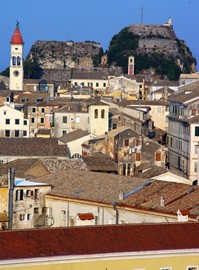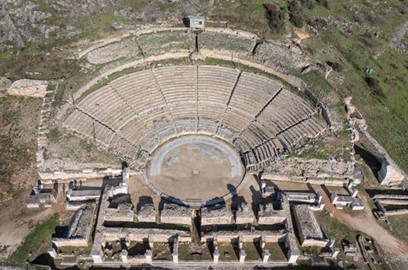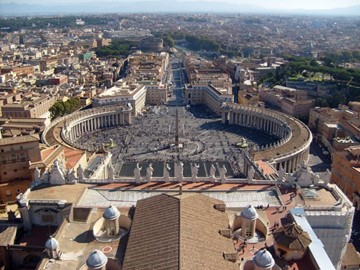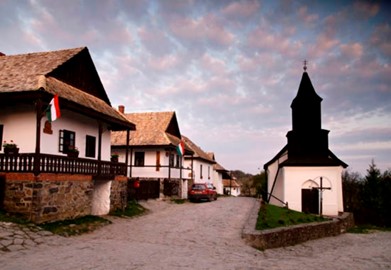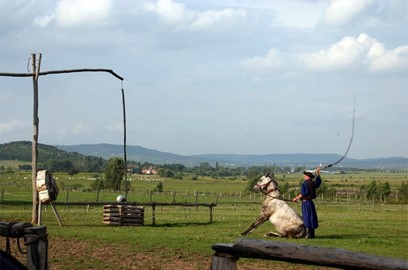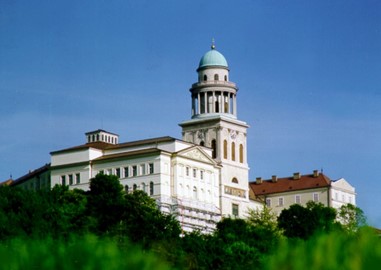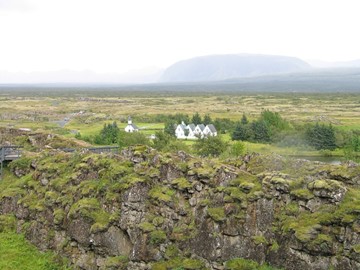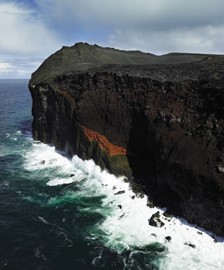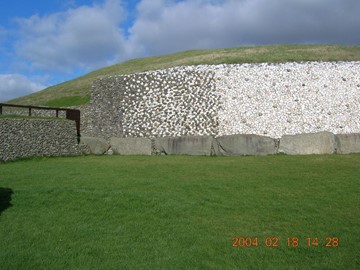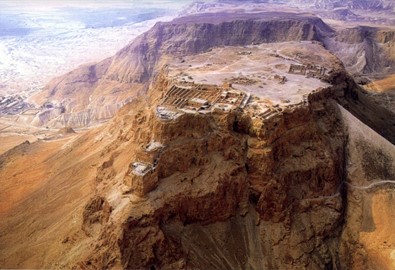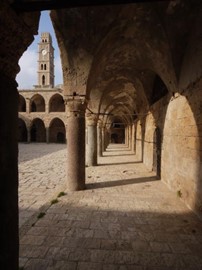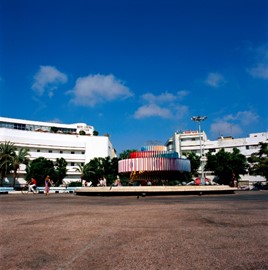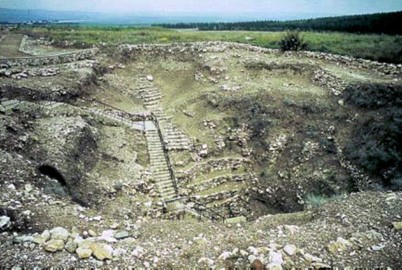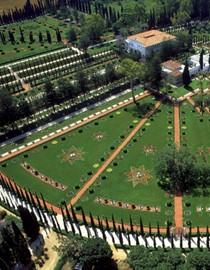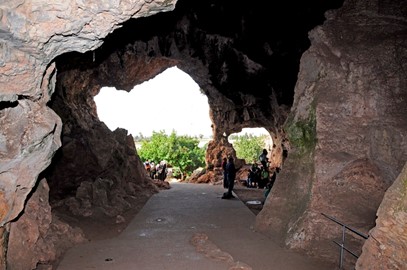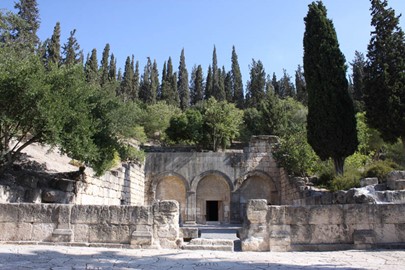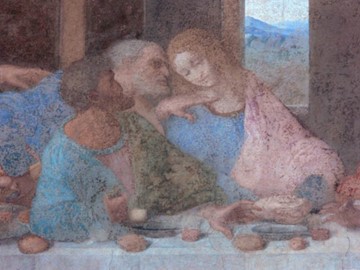region :: europe and north america
Mycenae and Tiryns
The Archaeological Sites of Mycenae and Tiryns, recognized as a UNESCO World Heritage site, showcase the impressive remnants of two major centers of the Mycenaean civilization, flourishing from the 15th to 12th century BCE. These sites feature monumental cyclopean walls, elaborate palaces, and well-preserved tombs, reflecting the architectural and cultural achievements of this ancient Greek society. Excavations have uncovered artifacts like the famous Lion Gate and gold masks, offering insights into the wea... Read More
Pátmos Island
Pátmos Island, a UNESCO World Heritage site in Greece, is renowned for its historical and cultural significance. This small Aegean island is home to the Cave of the Apocalypse, where St. John the Evangelist is said to have received the visions recorded in the Book of Revelation, and the imposing Monastery of Saint John, a well-preserved example of Byzantine architecture. Its charming villages, pristine beaches, and serene atmosphere make it a unique destination steeped in spirituality and tradition.
Corfu
The Old Town of Corfu, a UNESCO World Heritage site in Greece, is a well-preserved example of a fortified Mediterranean port town. Its historic architecture reflects Venetian, French, and British influences, with narrow streets, elegant buildings, and two imposing fortresses. The site’s cultural significance and strategic location have made it a notable landmark, showcasing centuries of history in a compact, walkable area.
Philippi
Philippi, a UNESCO World Heritage site in Greece, is an ancient city renowned for its historical and cultural significance. Founded in 356 BC by Philip II of Macedon, it later became a key Roman center, notably as the site of the 42 BC Battle of Philippi. The site features well-preserved ruins, including a theater, basilicas, and the Octagon church, reflecting its rich Greek, Roman, and early Christian heritage. Today, Philippi stands as a testament to its pivotal role in shaping Mediterranean history.
Vatican City
Vatican City, a UNESCO World Heritage site in Rome, is an independent city-state enclaved within Italy, serving as the spiritual and administrative headquarters of the Roman Catholic Church. Home to iconic landmarks like St. Peter’s Basilica and the Sistine Chapel, it boasts a rich history and unparalleled artistic heritage, including Michelangelo’s masterpieces. Governed by the Holy See, it attracts millions of pilgrims and tourists annually, offering a unique blend of faith, culture, and tradition.
Budapest
Budapest, a UNESCO World Heritage site in Hungary, is renowned for its stunning architecture, rich history, and vibrant culture. The city seamlessly blends the historic charm of Buda, with its medieval castle and cobblestone streets, and the bustling energy of Pest, home to grand boulevards and the iconic Parliament building. Highlights include the thermal baths, a legacy of Roman and Ottoman influences, and the picturesque Danube River, spanned by elegant bridges like the Chain Bridge. Budapest offers a ca... Read More
Hollóko
Hollókő, a UNESCO World Heritage site in Hungary, is a well-preserved traditional village showcasing the country’s rural life and architecture. Known for its unique Palóc culture, the village features 17th- and 18th-century houses with whitewashed walls and wooden porches, reflecting historical building techniques. Its cobblestone streets and vibrant folk traditions, including annual festivals, draw visitors seeking an authentic glimpse into Hungary’s past. The site’s designation highlights its global cultu... Read More
Hortobágy
Hortobágy, a UNESCO World Heritage site in Hungary, is a vast steppe landscape renowned for its unique cultural and natural heritage. This expansive plain showcases traditional pastoral practices, including the iconic Hungarian cattle herding by csikós (mounted herdsmen), alongside a rich biodiversity of rare bird species and grasslands. Recognized for its historical significance and ecological value, Hortobágy offers a glimpse into centuries-old traditions harmonized with nature, making it a remarkable tes... Read More
Pannonhalma Benedictine Abbey
Pannonhalma Benedictine Abbey, a UNESCO World Heritage site in Hungary, is a historic monastery founded in 996 AD. It stands as one of the oldest continuously operating monastic communities in the world, renowned for its architectural beauty, including a blend of Romanesque, Gothic, and Baroque styles. The abbey houses a vast library with rare manuscripts and serves as a cultural and spiritual center, reflecting its enduring significance in European history.
Pécs Necropolis
The Pécs Necropolis is an early Christian burial site recognized for its remarkable 4th-century tombs, adorned with intricate frescoes depicting biblical scenes and symbols of faith. This UNESCO World Heritage Site showcases the artistic and architectural sophistication of a community embracing Christianity during the Roman Empire. It offers a glimpse into the spiritual and cultural life of the era.
Tokaj Wine Region
The Tokaj Wine Region, a UNESCO World Heritage site in Hungary, is renowned for its historic vineyards and unique winemaking traditions dating back centuries. Located in the northeastern part of the country, this picturesque area is celebrated for producing Tokaji Aszú, a sweet, amber-hued wine made from grapes affected by noble rot, a process that concentrates their sugars and flavors. The region’s volcanic soil, microclimate, and ancient cellar systems contribute to its distinct terroir, earning it global... Read More
Thingvellir
Thingvellir, a UNESCO World Heritage site in Iceland, is a historic and geological marvel where the North American and Eurasian tectonic plates meet, creating a dramatic rift valley. It served as the location for Iceland’s ancient parliament, the Althing, established in 930 AD, making it one of the world’s oldest democratic assemblies. Visitors can explore its unique landscape, including fissures, waterfalls, and clear springs, while soaking in its cultural significance tied to Iceland’s heritage and identi... Read More
Surtsey
Surtsey, a UNESCO World Heritage site in Iceland, is a volcanic island formed by underwater eruptions between 1963 and 1967, offering a unique natural laboratory for studying ecological succession and geological processes. Named after the Norse fire giant Surtr, it remains uninhabited and strictly protected, allowing scientists to observe the gradual colonization of life, from microorganisms to plants and birds, in a pristine environment. Its significance lies in its untouched state, providing valuable insi... Read More
Brú na Bóinne
Brú na Bóinne, a UNESCO World Heritage site in Ireland, is a prehistoric landscape renowned for its ancient passage tombs, including the iconic Newgrange, Knowth, and Dowth. Dating back over 5,000 years, these monumental structures feature intricate megalithic art and align with solar events, reflecting the sophisticated astronomical knowledge of Neolithic people. This archaeological complex stands as a testament to early human engineering and cultural heritage.
Sceilg Mhichíl
Sceilg Mhichíl, a UNESCO World Heritage site in Ireland, is a striking monastic island featuring a well-preserved early Christian settlement. Perched atop a rugged rock, it includes stone beehive huts, oratories, and a medieval church, reflecting ascetic life from the 6th to 13th centuries. Its dramatic location and historical significance highlight its role as a unique cultural and spiritual landmark.
Masada
Masada, a UNESCO World Heritage site in Israel, is an ancient mountaintop fortress renowned for its historical and archaeological significance. Built by King Herod in the 1st century BCE, it features well-preserved palaces, bathhouses, and storehouses, showcasing Roman-era engineering. The site is celebrated as a symbol of Jewish resistance, linked to the dramatic stand of rebels against Roman forces in 73 CE. Its strategic location and stark desert backdrop highlight its enduring cultural importance.
Acre
The Old City of Acre, a UNESCO World Heritage site in Israel, is a historic port city renowned for its well-preserved Crusader-era fortifications and medieval urban layout. This coastal gem features an intricate network of underground tunnels, a grand Knights’ Hall, and remnants of Ottoman architecture, reflecting its layered history as a cultural crossroads. Its strategic location has shaped a unique blend of Eastern and Western influences, evident in its ancient walls and bustling markets.
White City of Tel Aviv
The White City of Tel-Aviv, a UNESCO World Heritage site in Israel, is renowned for its exceptional collection of modernist architecture from the 1930s and 1940s. Designed by European Bauhaus-trained architects, its white concrete buildings exemplify functional design and urban planning tailored to a Mediterranean climate. This distinctive urban landscape reflects a fusion of cultural influences and innovative 20th-century architectural principles.
Incense Route in the Negev
The Incense Route in the Negev, a UNESCO World Heritage Site in Israel, showcases the ancient Nabatean trade network that thrived from the 3rd century BCE to the 2nd century CE, linking Arabia to the Mediterranean with frankincense and myrrh. This historic route features four well-preserved desert towns—Avdat, Haluza, Mamshit, and Shivta—along with fortresses and innovative agricultural systems, reflecting the Nabateans' mastery of desert life. Recognized in 2005, it highlights the economic and cultural sig... Read More
Biblical Tels
The Biblical Tels, a UNESCO World Heritage site in Israel, encompass ancient settlement mounds known as tels, which reveal layers of human history dating back to biblical times. These sites, including Megiddo, Hazor, and Beersheba, feature impressive archaeological remains such as fortifications, water systems, and palaces, illustrating the evolution of Bronze and Iron Age civilizations. Recognized for their historical and cultural value, they offer insights into early urban planning and societal developmen... Read More
Bahá'i Holy Places
The Bahá'i Holy Places, a UNESCO World Heritage site in Israel, encompass a collection of sacred sites central to the Bahá'i Faith, including shrines, gardens, and historic buildings. Key among them are the Shrine of the Báb, a golden-domed mausoleum, and the Shrine of Bahá'u'lláh, surrounded by meticulously landscaped terraces. These sites represent the spiritual and administrative heart of the Bahá'i community, reflecting its principles of unity and peace through their serene design and global significanc... Read More
Mount Carmel
The Sites of Human Evolution at Mount Carmel, a UNESCO World Heritage site in Israel, encompass a series of prehistoric caves revealing critical evidence of early human development. These archaeological treasures, including the Nahal Me’arot caves, contain fossils, tools, and traces of fire use spanning over 500,000 years, illustrating the transition from Neanderthals to anatomically modern humans. The site offers profound insights into the cultural and biological evolution of humanity in a Mediterranean la... Read More
Caves of Maresha and Bet Guvrin
The Caves of Maresha and Bet-Guvrin, a UNESCO World Heritage site in Israel, represent an extraordinary network of ancient underground chambers carved into soft chalk bedrock. This archaeological marvel includes hundreds of bell-shaped caves, originally quarried for building materials and later repurposed as homes, tombs, and places of worship across Hellenistic, Roman, and Byzantine eras. Renowned for their historical and cultural value, they offer a unique glimpse into the region's subterranean past and h... Read More
Necropolis of Bet She'arim
The Necropolis of Bet She’arim, a UNESCO World Heritage site in Israel, is an ancient Jewish burial complex renowned for its elaborate rock-cut tombs and catacombs. Dating back to the 2nd century CE, it served as a major burial site following the Jewish revolt against Roman rule, featuring intricate carvings, inscriptions, and sarcophagi that reflect Jewish art and beliefs of the period. Its historical significance lies in its testament to the diaspora and resilience of Jewish culture during antiquity.
Santa Maria delle Grazie
Santa Maria delle Grazie, a UNESCO World Heritage site in Italy, is a historic Dominican convent renowned for housing Leonardo da Vinci’s masterpiece, 'The Last Supper.' This 15th-century mural, painted in the convent’s refectory, exemplifies Renaissance art and innovation. The site itself, a blend of Gothic and Renaissance architecture, reflects the cultural and artistic heritage of its time. Its global significance lies in this extraordinary fusion of art and history.
